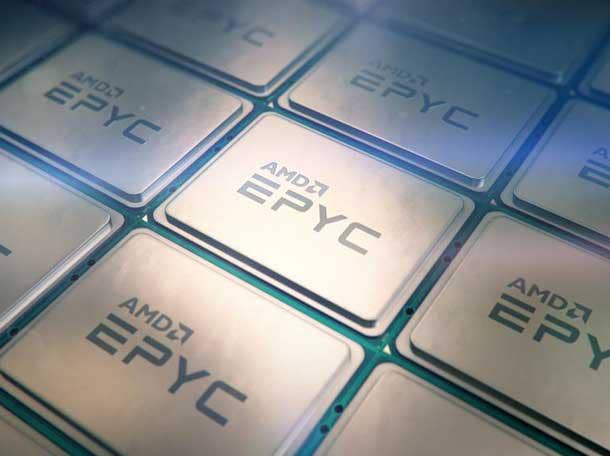Why VMware's Licensing Change May Be Good News For AMD EPYC
'VMware's move to raise prices for 32 cores and above on licensing is an indication that AMD's demand is stronger than expected, and it's a bullish signal,' Rosenblatt Securities analyst Hans Mosesmann says, elaborating on a note he sent to investors today after AMD's stock price dropped.

A Wall Street analyst blamed a drop in AMD's stock price on VMware's new software licensing change that will double the licensing costs for the chipmaker's high-core EPYC server processors. But he downplayed the potential negative impact and said VMware's move is actually a good sign for EPYC.
The Santa Clara, Calif.-based company's stock price was down roughly 1.40 percent to $48.06 a share on Thursday after VMware tweaked its per-CPU pricing model to cost processors with more than 32 processors an additional license, effectively doubling the licensing costs of AMD's 48-core and 64-core EPYC Rome processors that launched last year.
[Related: VMware Licensing VP: CPU Pricing Change Has ‘Zero Impact’]
In a note issued Thursday, Rosenblatt Securities analyst Hans Mosesmann said AMD shares were "under some pressure" as the result of the VMware licensing change, but he said the notion that the change will sway buyers to switch from EPYC to Intel's Xeon processors is "ludicrous" because AMD's server processors continue to provide "massive and multi-year" total cost of ownership benefits.
In an interview with CRN, Mosesmann said even with the licensing change, AMD still wins on core density, which he estimated can translate to a roughly 10 percent savings in software licenses. That's because AMD can pack up to 128 cores into one motherboard between two 64-core EPYC processors while Intel requires four 28-core Xeon processors across two motherboards for 112 cores, he added. The implication is that while two 64-core EPYC processors would cost four VMware licenses, it would cost the same amount of licenses for four 28-core Xeon processors for 12.5 percent fewer cores.
"The VMware revenues from those would be equivalent," Mosesmann said, and that doesn't even consider the cost savings offered by AMD's single-socket, 64-core EPYC processors.
While Intel currently sells 48-core and 56-core processors in the chipmaker's second-generation Xeon Scalable, those processors aren't "socketable," meaning they can't be sold as standalone products and need to be sold with a complete server solution, which limits their market, according to Mosesmann. Intel has previously announced plans for a socketable 56-core Xeon processor, code-named Cooper Lake, that is set to come out later this year.
AMD, on the other hand, has six socketable processors with more than 32 cores, which can provide other cost savings benefits over Intel Xeon besides licensing costs, he said. For instance, because EPYC can provide higher core density, it can reduce the number of servers, space and energy that would be required for running the same number of virtual machines with Intel Xeon.
"They just win on all the metrics. That's the rub for Intel," he said. "It's going to be tough to compete. It's not going to change the calculation for the hyperscale guys, in particular, in their use of AMD."
AMD told CRN earlier this week that the chipmaker "continues to lead the industry on performance, features and TCO in virtualized environments for both 1 socket and 2 socket systems," even if the "new VMware licensing guidelines change the economics slightly for higher core count processors."
While some VMware partners told CRN that the licensing change makes processors with more than 32 cores "severely unattractive," Mosesmann challenged that notion and said VMware's move shows that the virtualization giant sees AMD's 64-core and 48-core EPYC processors as becoming more viable in the market faster than previously expected.
"VMware's move to raise prices for 32 cores and above on licensing is an indication that AMD's demand is stronger than expected, and it's a bullish signal," he said.